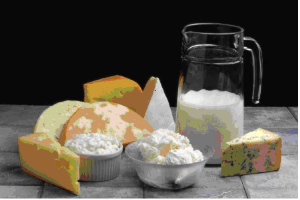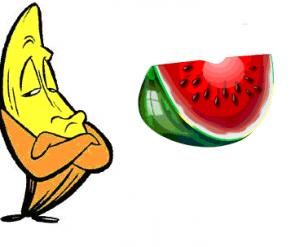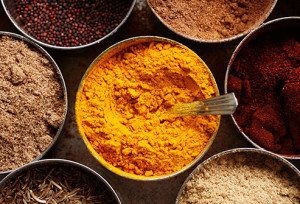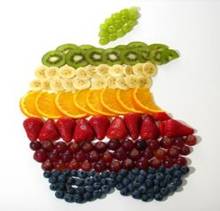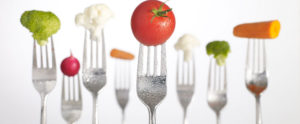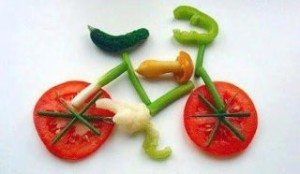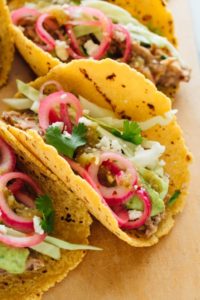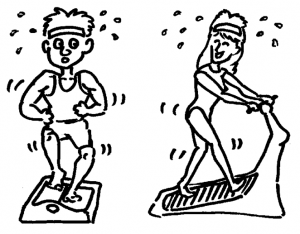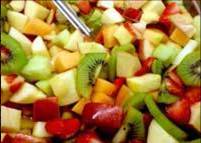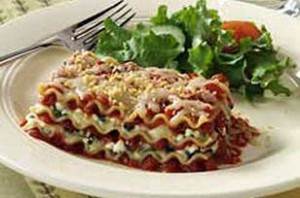Happy August
Wow, can you believe we are now into the second half of the year? Time flies…. and with time, comes renewals, regroupings, recommitments to all those earlier goals that somehow waiver as we get too comfortable with them. Take a moment to rethink, and hope you are on your way to health and happiness as the second half of this year progresses. If you re not half way there, hop, skip and jump, or just break a sweat everyday !!
I dedicate this newsletter to Lactose, since I get many queries on this monosaccharide. Hope I can teach you a fact or two, or at least offer some new, interesting recipe ideas…. Enjoy!!
==========================================================================
The Low-down on Lactose Intolerance
Approximately 4000 million people cannot digest lactose with about 75% of those being African American, Jewish, Native American, and Mexican American. 90% of Asian Americans are believed to also be lactose intolerant. Below is the RDA (Recommended Dietary Allowance) for calcium.
| Table : Recommended Dietary Allowances (RDAs) for Calcium [1] | ||||
| Age | Male | Female | Pregnant | Lactating |
| 0–6 months* |
200 mg |
200 mg |
||
| 7–12 months* |
260 mg |
260 mg |
||
| 1–3 years |
700 mg |
700 mg |
||
| 4–8 years |
1,000 mg |
1,000 mg |
||
| 9–13 years |
1,300 mg |
1,300 mg |
||
| 14–18 years |
1,300 mg |
1,300 mg |
1,300 mg |
1,300 mg |
| 19–50 years |
1,000 mg |
1,000 mg |
1,000 mg |
1,000 mg |
| 51–70 years |
1,000 mg |
1,200 mg |
||
| 71+ years |
1,200 mg |
1,200 mg |
||
* Adequate Intake (AI)
Lactose is found in a variety of foods; however, not all foods containing lactose bother every individual. Many individuals with lactose intolerance can tolerate up to 1 glass (8 oz) of milk, yogurt, and hard cheeses without symptoms. Lactase supplements and lactose-free milk products are easily available and allow for individuals with lactose intolerance to consume an adequate amount of calcium. Drinking milk with meals can also help to alleviate symptoms. Certain conditions may increase the risk of developing lactose intolerance such as Celiac and Irritable Bowel Syndrome. Lactose free milk and regular milk are almost identical- the only difference is the lactose has been broken down in the lactose-free milk.
| Lactose in Common Foods | ||
| Milk, reduced fat | 1 cup | 11 – 14 g |
| Buttermilk, whole | 1 cup | 10 g |
| Yogurt, whole milk | 1 cup | 10 – 12 g |
| Ice cream | ½ cup | 5 – 6 g |
| Yogurt, plain, low fat | 1 cup | 5 – 19 g |
| Sour cream | ½ cup | 4 g |
| Cottage cheese | ½ cup | 3 – 4 g |
| Swiss cheese | 1 oz | 1 g |
| Cream cheese | 1 oz | 1 g |
Common symptoms of lactose intolerance include:
- Bloating
- Abdominal pain
- Diarrhea
If you believe you are lactose intolerant, keeping a food diary is a helpful tool. Elimination diets under the instruction of a health professional can also prove useful. Lactose intolerance, if on a restricted diet, can put some individuals at risk of calcium deficiency, osteoporosis, or other health conditions, typically most individuals can meet their daily needs by a few dietary modifications.
Fitness Corner: Dance It Off
Dance offers great value for burning calories while simultaneously having fun.
Kicking up the intensity of your dance steps can help expend more energy, which has a direct impact on the number of calories burned. At a more vigorous pace, you can expect to burn about 360 calories an hour at a weight of 125 pounds, while a weight of 155 pounds causes you to burn close to 450 calories per hour. At 185 pounds, you burn more than 530 calories per hour. With the increase in intensity, it becomes a little easier to reach the deficit needed to lose weight.
How to reach those intensities can be supported by a great dance studio. Check out Dance It Off in Sandy Springs (they are offering a free class to any of my followers, so tell them Ilana sent you, and Dance Off some extra calories). http://www.danceitoffstudio.com/
Calorie Corner: Milk and Milk Substitutes
*per serving (1 cup); data from nutritiondata.self.com
| Milk | Calories | Fat (Grams) | Protein (Grams) | Carbohydrates (Grams) |
Milk, Buttermilk, Fluid, Cultured, Reduced Fat |
137 | 5 | 10 | 13 |
Milk, whole |
146 | 8 | 8 | 13 |
Milk, Lowfat, Fluid, 1% Milkfat, With Added Vitamin A |
102 | 2 | 8 | 13 |
Milk, fluid, nonfat, calcium fortified (fat free or skim) |
86 | 0 | 8 | 12 |
Silk Plain, Soymilk |
100 | 4 | 7 | 8 |
Silk Pure Almond Original Almond Milk |
60 | 3 | 1 | 8 |
Rice Dream, original, enriched |
120 | 2.5 | 1 | 23 |
Beat the Heat with a Watermelon Treat
Not only is watermelon is a favorite summer food selection and barbeque closer, it is equally beneficial to health.
The antioxidant lycopene is a chemical found in plants that gives certain foods (watermelon, tomatoes, red grapefruit, and guava) their red color. Part of the large class of plant compounds called carotenoids, which help protect and preserve body cells from oxidation and damage, lycopene may reduce one’s risk of various cancers, particularly prostate cancer. Watermelon is also a good source of antioxidants, that work towards preventing heart disease, lowering cholesterol.
CHOOSING THE PERFECT WATERMELON
Choose a firm, symmetrical fruit that is free of bruises, cuts, and dents.
Pick up the melon, it should feel heavy. (A good watermelon is 92% water.)
The underside should have a creamy yellow spot where the melon sat on the ground and ripened in the sun.
RECIPE SELECTION
Watermelon-Strawberry Smoothie
(16 oz serving)
1 cup seeded watermelon, diced
¾ cup lemon sorbet or sherbet
8 frozen whole strawberries
1 tablespoon lemon juice
4 cubes of ice
1 cup water
Place all ingredients in a blender. Blend until smooth.
(cals; 224, carbs: 50g carbs, 4g fiber (net carbs = 46g (mostly natural sugar: fructose), 2g pro, 0 g fat.
Watermelon Parfait
(2 servings)
½ cup low fat granola
1 cup seedless watermelon, cut into small chunks
2 cups of low fat vanilla yogurt
1 sliced banana, sliced
¼ cup of Almond slivers
In 2 tall glasses
Layer ½ of each of the granola, watermelon, yogurt and banana
Repeat Layers with the other half of the ingredients.
Garnish with slivered almonds.
(cals per serve: 230 cals, 4g fat, 9g pro, 35g carbs, 5 g fiber)
